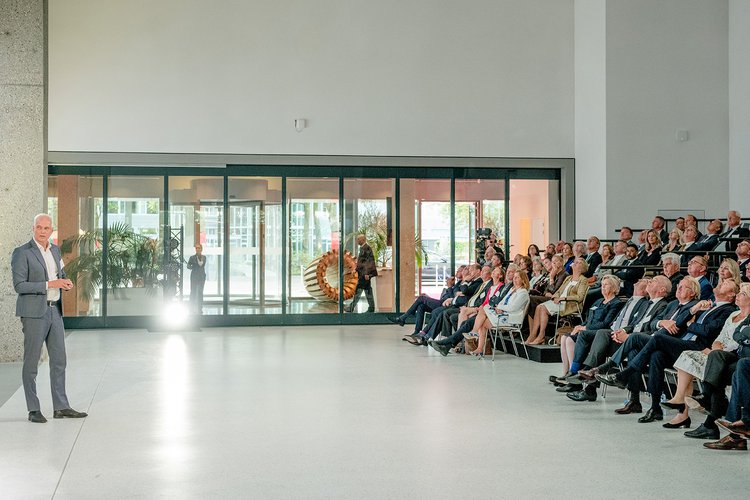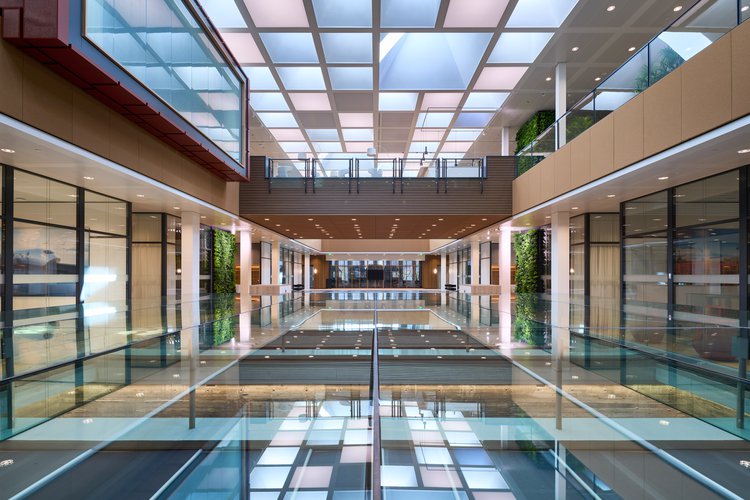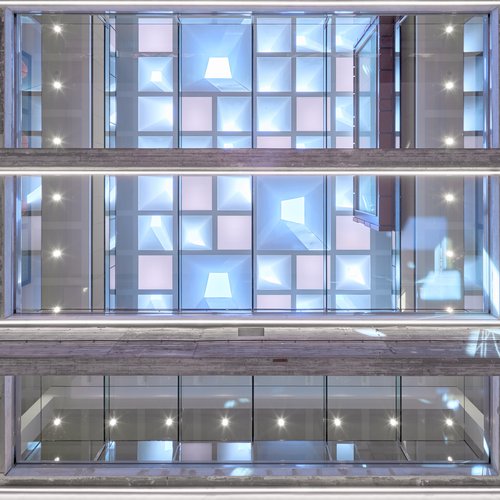Renovated main building of South Holland Provincial Building officially opened
15.09.2022
His Majesty the King officially opened the renovated main building of the South Holland Provincial Building on Wednesday, Sept. 14, 2022.
Architect and partner Hans Goverde during his opening address to His Majesty the King
Over the past two years, the South Holland Provincial Building has been renovated and made more sustainable, resulting in an energy-neutral building. Innovative sustainability techniques and materials were used for this, such as triple glazing and energy storage in the ground.
The building is also designed so that it can be flexibly adapted to future technological developments. Sustainability and CO2 reduction are the norm for future maintenance. Furthermore, circular materials have been used as much as possible to reduce waste, and various elements from the history of the main building have been reinstated, including the doors of the States Room.
Provinciehuis Zuid-Holland was built in 1963 to a design by Fritz Peutz. The building is representative of the architecture of administrative buildings of the time. Distinguished, impressive, spacious and equipped with subdued but very consistent and clear details with sober ornaments.
Partly due to the expansion of the provincial government building in the 1990s, the entrance was shifted from Malieveld to the courtyard of the complex. As a result, the position of the Statenzaal was no longer correct. From the square, a new series was designed of front hall-Statenzaal-antechambre (with a view of Malieveld) in which Statenzaal and entrance hall were reversed. This creates transparent transverse axes in the new situation. By bringing daylight into the center of the building, not only the atmosphere is greatly improved, but the activities taking place at the public level become visible. The original courtyard on the office floors ended on the second floor. This floor has been opened up and daylight now penetrates from the new light roof to the first floor in different ways.
The original design played with multiple finishes, ranging from smooth and shiny to rough and coarse. This resulted in a high tactile quality that sets the mood and stimulates the senses. That characteristic has been carried through into the new design. Carefully designed details bring contrasts between concrete, wood, glass, natural stone and metal. All enhanced by the play of daylight that can now be felt everywhere.
"Inspired by the Dutch light of the Hague School."
The main architectural theme is to add daylight. An essential element is the new roof over the entire third floor, into which large openings have been inserted. Irregular, trapezoidal hoods filter light and reduce the heat load of direct sunlight. This varied light is directed like a Jacob's ladder to the first floor through voids, glass hoods and light openings above the state room. The pattern of the light canopies is inspired by the wall reliefs of Henk van der Plas present and the work of Jan Schoonhoven. The result is a composition of Dutch light, with sky, direct and indirect light and reflections. Those who look upward see a collage of clouds floating by. The dense parts of the grid are LED surfaces, which create a reversed effect at night.
Previous sketches by architect Peutz, which were not executed, show how he sought to crown the building on the roof. That desire has been fulfilled with the new design: The new light roof ends Peutz's building with a thin, cantilevered cornice that heightens the experience of the panorama of The Hague. The level of this roof is raised, so the size of the floor is now the same as the original building levels below. The grid pattern of the ceiling forms a continuum that extends outside. Artificial light further enhances the experience of the original building, including through skimming light on the raw concrete. The skylights in the State Room are combined with new LED light fixtures. These iconic components enhance original grandeur of the building.


